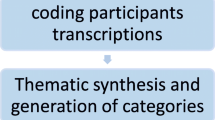Abstract
Background
Trained doctors and para-medical personnel in accident and emergency services are scant in India. Teaching and training in trauma and emergency medical system (EMS) as a specialty accredited by the Medical Council of India is yet to be started as a postgraduate medical education program. The MI and CMO (casualty medical officer) rooms at military and civilian hospitals in India that practice triage, first-aid, medico-legal formalities, reference and organize transport to respective departments leads to undue delays and lack multidisciplinary approach. Comprehensive trauma and emergency infrastructure were created only at a few cities and none in the rural areas of India in last few years.
Aim
To study the infrastructure, human resource allocation, working, future plans and vision of the established trauma centers at the 3 capital cities of India — Delhi (2 centres), Lucknow and Mumbai.
Setting and design
Participant observer structured open ended qualitative research by 7 days direct observation of the facilities and working of above trauma centers.
Material and methods
Information on, 1. Infrastructure; space and building, operating, ventilator, and diagnostic and blood bank facilities, finance and costs and pre-hospital care infrastructure, 2. Human resource; consultant and resident doctors, para-medical staff and specialists and 3. Work style; first responder, type of patients undertaken, burn management, surgical management and referral system, follow up patient management, social support, bereavement and postmortem services were recorded on a pre-structured open ended instrument interviewing the officials, staff and by direct observation. Data were compressed, peer-analyzed as for qualitative research and presented in explicit tables.
Results
Union and state governments of Delhi, Maharashtra and Uttar Pradesh have spent heavily to create trauma and emergency infrastructure in their capital cities. Mostly general and orthopedics surgeons with their resident staff were managing the facilities. Comprehensively trained accident and emergency (AandE) personnel were not available at any of the centers. Expert management of cardiac peri-arrest arrhythmias, peripheral and microvascular repair were occasionally available. Maxillo-facial, dental and prosthodontic facilities, evenomation grading and treatment of poisoning — anti venom were not integrated. Ventilators, anesthetist, neuro and plastic surgeons were available on call for emergency care at all the 4 centers. Emergency diagnostic radiology (X-ray, CT scan, and ultrasound) and pathology were available at all the 4 centers. On the spot blood bank and component blood therapy was available only at the Delhi centers. Pre-hospital care, though envisioned by the officials, was lacking. Comprehensively trained senior A and E personnel as first responders were unavailable. Double barrier nursing for burn victims was not witnessed. Laparoscopic and fibreoptic endoscopic emergency procedures were also available only at Delhi. Delay in treatment on account of incomplete medico-legal formalities was not seen. Social and legal assistance, bereavement service and cold room for dead body were universally absent. Free treatment at Delhi and partial financial support at Lucknow were available for poor and destitute.
Conclusion
Though a late start, evolution of trauma services was observed and huge infrastructure for trauma have come up at Delhi and Lucknow. Postgraduate accreditation in Trauma and EMS and creation of National Injury Control Program must be mandated to improve trauma care in India. Integration of medical, non traumatic surgical and pediatric emergency along with pre-hospital care is recommended.
Similar content being viewed by others
References
The Registrar General of India report on Health Information of India. Survey of causes of Deaths by Central Bureau of Health Intelligence, Directorate General of Health Services, Ministry of Health and Family Welfare, Government of India. New Delhi: Ministry of Health and Family Welfare; 2000
Website: www.economy watch.com/economies-in-top/topten-economies.html.
World Health Organization. Reducing risks, Promoting healthy life. World Health Report, Geneva, WHO 2002
Bull World Health Organs. 2002; 80(11):900–905
Park and Park, Accident and Injuries, p. 340–345, Ed.19
DeMaria EJ, Dalton JM, Gore DC, Kellum JM, Sugerman HJ (2000) Complementary roles of laparoscopic abdominal exploration and diagnostic peritoneal lavage for evaluating abdominal stab wounds: a prospective study. J Laparoendosc Adv Surg Tech A 10(3):131–136
Kaban GK, Novitsky YW, Perugini RA, Haveran L, Czerniach D, Kelly JJ, Litwin DE (2008) Use of laparoscopy in evaluation and treatment of penetrating and blunt abdominal injuries. Surg Innov 15(1):26–31
Mohan D (2004) Road Traffic Deaths and Injuries in India: Time for Action. Nat Med J India 17(2):63–66
Goel A, Kumar S, Bagga Manpreet K (2004) Epidemiological and trauma injury severity score (TRISS) analysis of trauma patients at a tertiary care center in India. Nat Med J India 17:186–189
Kumar S, Agarwal A K, Kumar A, Agarwal G.G., Chaudhary S, Dwivedi V (2008) A Study of Knowledge, Attitude and Practice of Hospital Consultants, Resident doctors and private practitioners with regard to pre-hospital and emergency care in Lucknow. Ind J Surg 70:14–18
Guidelines for Essential Trauma care, WHO, 2004
Author information
Authors and Affiliations
Corresponding author
Rights and permissions
About this article
Cite this article
Kumar, S., Chaudhary, S., Kumar, A. et al. Trauma care — a participant observer study of trauma centers at Delhi, Lucknow and Mumbai. Indian J Surg 71, 133–141 (2009). https://doi.org/10.1007/s12262-009-0037-0
Received:
Accepted:
Published:
Issue Date:
DOI: https://doi.org/10.1007/s12262-009-0037-0




